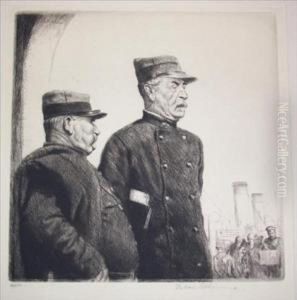Dwight Case Sturges Paintings
Dwight Case Sturges was an American artist born in 1874, known for his contributions to the American arts scene, particularly in the late 19th and early 20th centuries. Sturges was an accomplished etcher and painter, whose works are characterized by their detailed depiction of landscapes, urban scenes, and architectural subjects. Despite not being as widely recognized as some of his contemporaries, Sturges's work provides valuable insights into the American artistic movements of his time, reflecting the influences of Impressionism and Realism that were prevalent in American art during his career.
Sturges's journey in the arts began with his education, which was notably influenced by the prevailing artistic movements of his era. He studied under prominent artists and at esteemed institutions, though specific details of his education are less documented compared to his artistic output. His etchings, in particular, show a meticulous attention to detail and a mastery of technique that suggests a thorough and comprehensive artistic training. Sturges was active during a period when the American art scene was undergoing significant transformations, with artists exploring new subjects and techniques. His work captures the essence of this dynamic period, often focusing on the interplay of light and shadow, a characteristic element of both Impressionism and Realism.
Throughout his career, Dwight Case Sturges exhibited his work in various galleries and exhibitions, garnering recognition among art critics and collectors. While he may not have achieved the same level of fame as some of his peers, his contributions to the field of etching and painting have been appreciated by those who study American art from this period. Sturges's artistic legacy is preserved through his etchings and paintings, which continue to be studied and admired for their technical skill and artistic beauty. He passed away in 1940, leaving behind a body of work that continues to intrigue and inspire art historians and enthusiasts alike. His art remains a testament to the rich artistic heritage of the United States, capturing the spirit and transformation of the country during his lifetime.
